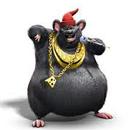'The glory-of-the-seas cone (C. gloriamaris) is 10 to 13 cm (4 to 5 inches) long and coloured golden brown, with a fine net pattern. Throughout most of the 19th and 20th centuries, it was known from fewer than 100 specimens, making it the most valuable shell in the world. In 1969 divers discovered the animal's habitat in the sandy seafloor near the Philippines and Indonesia. Hundreds of specimens have been collected since, and thus the shell's value has diminished significantly.'
 http://www.britannica.com/EBchecked/topic/131757/cone-shell
http://www.britannica.com/EBchecked/topic/131757/cone-shell
'Before 1837 only half a dozen [C. gloriamaris] were known to exist. In that year a famous British Collector, Hugh Cuming, visiting a reef near Jagna, Bohol Island, in the Philippines, turned over a rock, and found two, side by side, he recalled that he nearly fainted with delight. When the reef vanished after an earthquake, the world believed that the only habitat for this cone vanished forever.
A decent example would set one back at least $5,000 U.S dollars. Then, a fortunate diver found out where they lived; in the sand under certain circumstances, generally from 25 to 50 feet deeper than people can dive without mechanical equipment.
Soon, many hundreds were discovered, and today one can purchase a beautiful example of this once rarest and most sought after shells of all time, for less than $100, when inflation is considered, almost 600 times less expensive than the 1968 price (as it is written "How the mighty have fallen"......).'
 https://factsanddetails.com/world/cat53/sub338/item1265.html
https://factsanddetails.com/world/cat53/sub338/item1265.html


